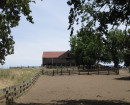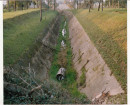Eurack Avenue of Honour
EURACK ROAD, EURACK, Colac-Otway Shire
-
Add to tour
You must log in to do that.
-
Share
-
Shortlist place
You must log in to do that.
- Download report
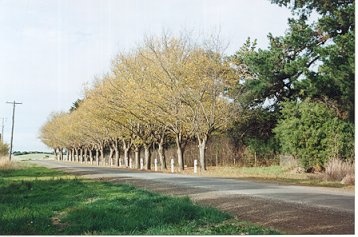

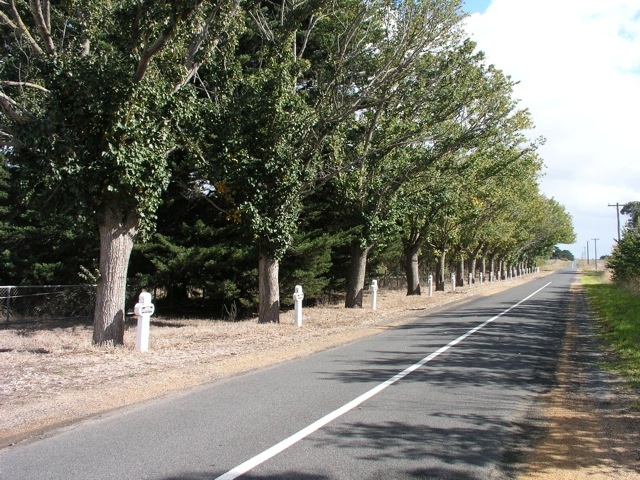
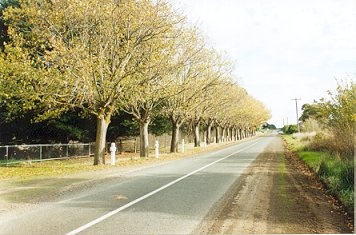
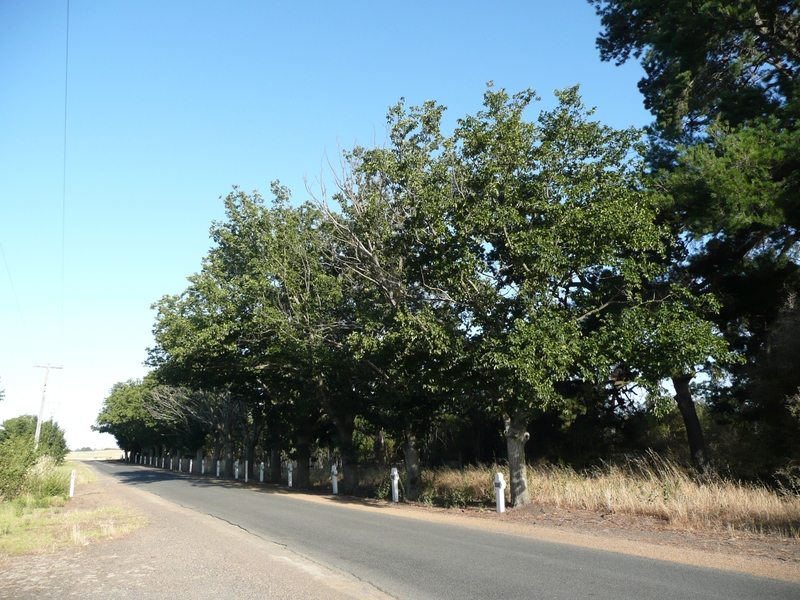
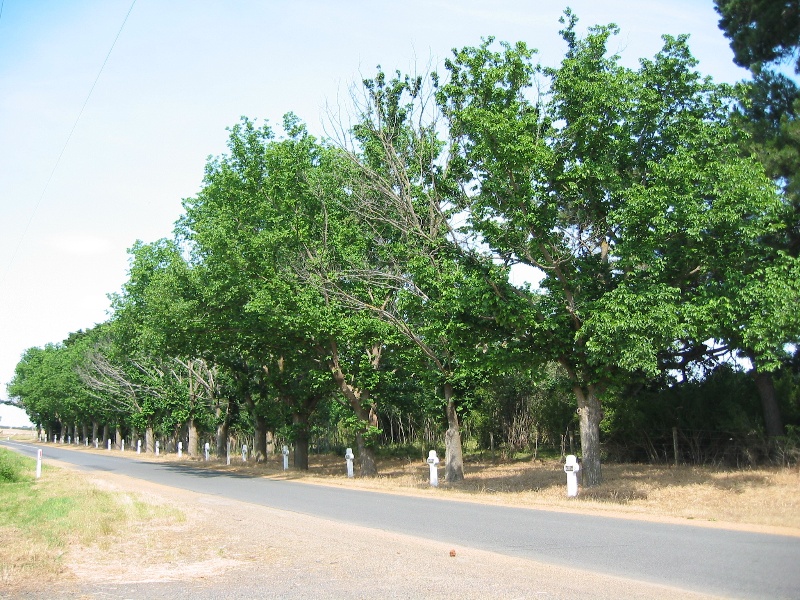
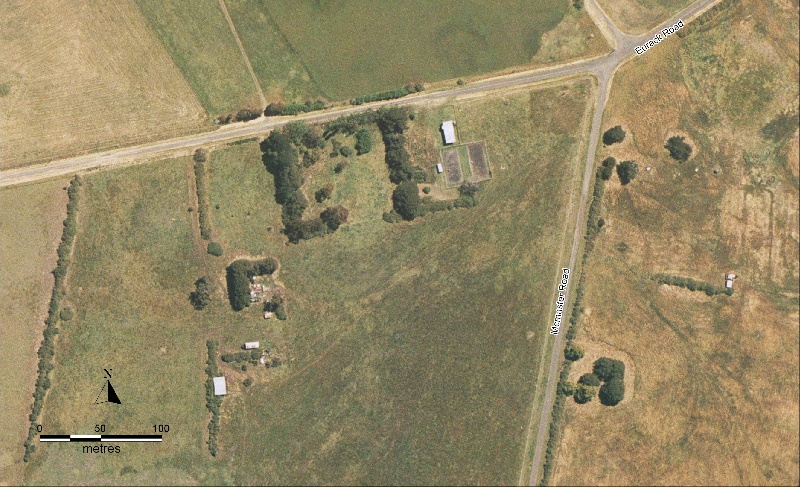
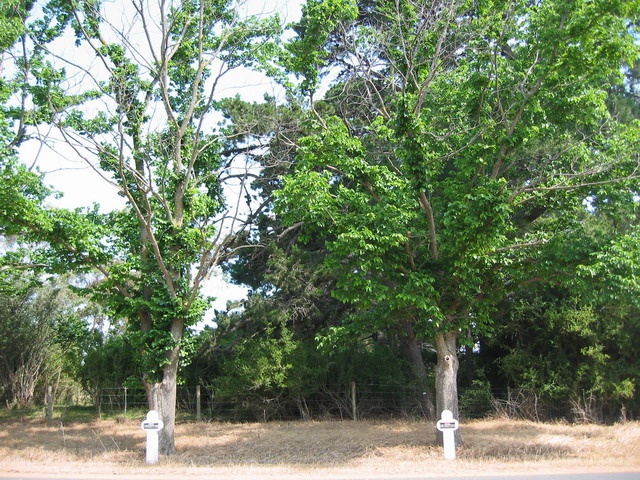
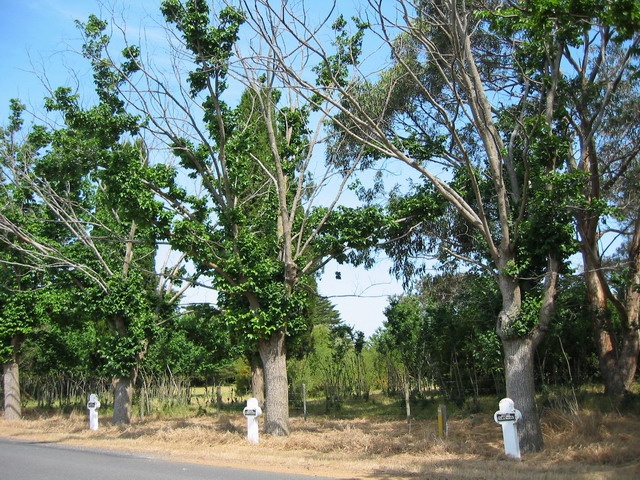
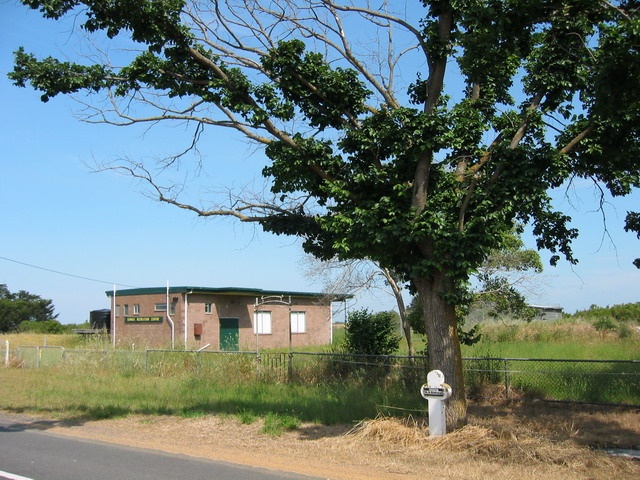
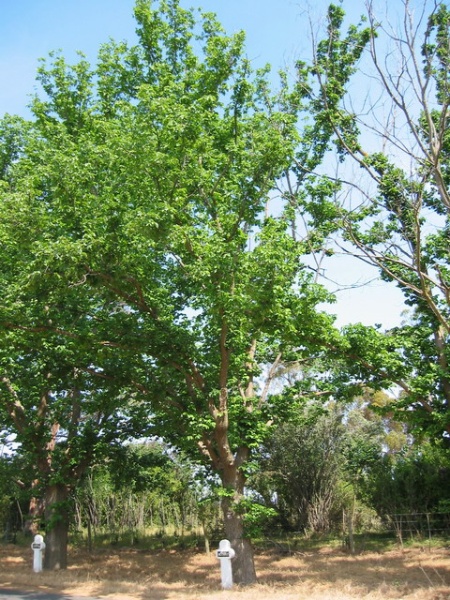
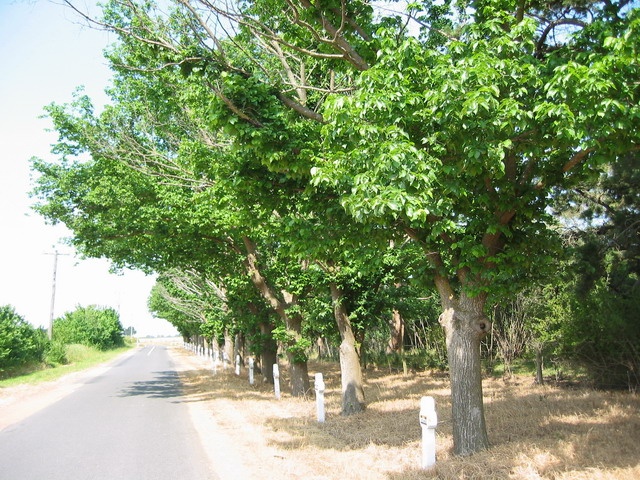
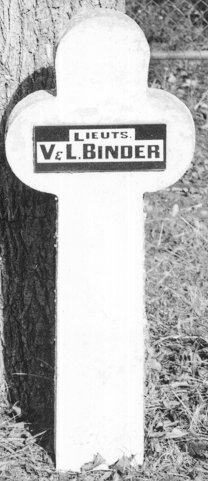
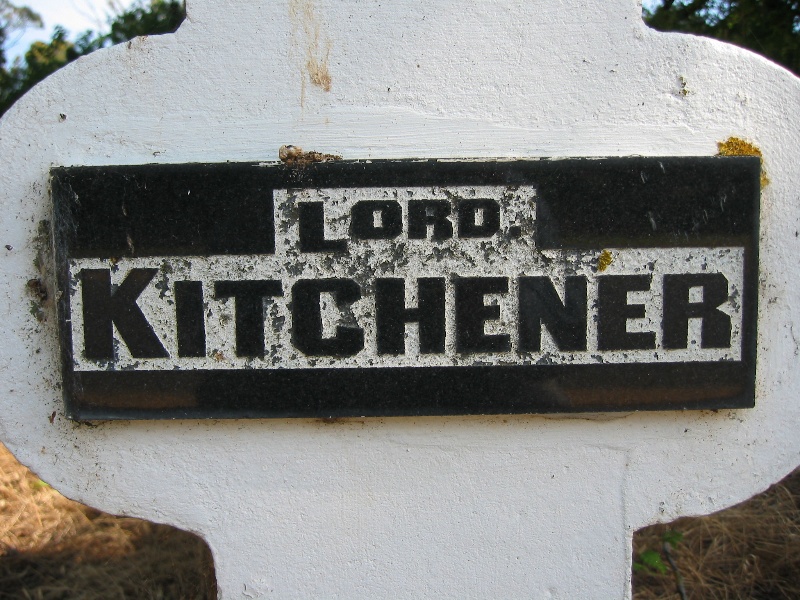



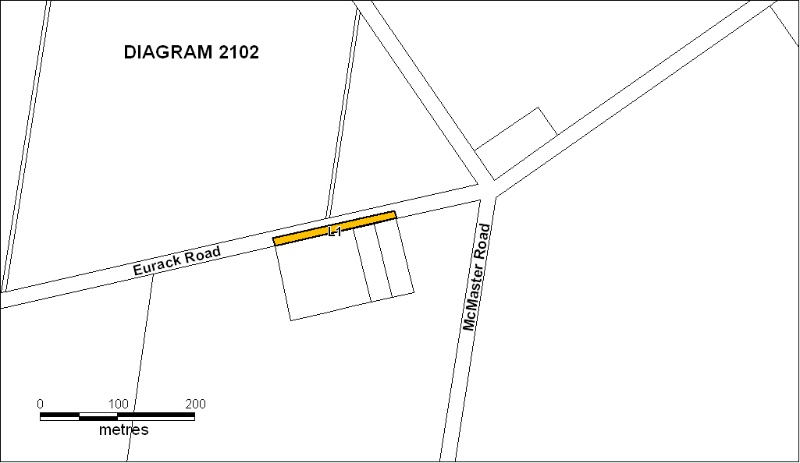
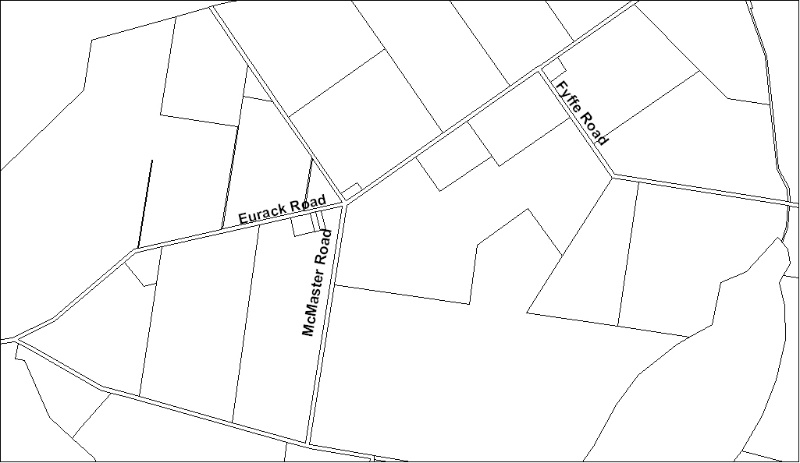
Statement of Significance
What is significant?
The Eurack Avenue of Honour is a World War I memorial on Eurack Road commemorating the 26 soldiers from the district who enlisted for the war. The planting of the Avenue commenced as an Arbour Day project for the Eurack School in May 1916 on the initiative of Lieutenant George Pentreath, then head teacher of the school who enlisted in July 1916. The Avenue was established on the roadside in front of the Eurack School, general store, post office and the church, the centre of the small settlement that sprang up after the Eurack Estate was subdivided for closer settlement in 1891. The memorial is a single row of 20 Ulmus x hollandica (Dutch Elm) planted along the south side of Eurack Road. Each tree is marked with a stylised white painted concrete cross bearing the name of the soldier/s it commemorates inscribed on a black marble plate. Six of the trees are dedicated to brothers. One of the crosses commemorates Lord Kitchener, the British Secretary of State for War who was killed in 1916 when HMS Hampshire struck a mine en route to Russia.
How is it significant?
The Eurack Avenue of Honour is of historical, aesthetic and social significance to the State of Victoria.
Why is it significant?
The Eurack Avenue of Honour is historically significant as the earliest known of this form of war memorial in Victoria, followed by memorial plantings in Maldon, August 1916 and Ballarat, 1917. It is also significant for exemplifying rural Victoria's reaction to World War I. It is representative of plantings that first appeared in Australia during World War I commemorating all those who enlisted for service in an egalitarian form where each individual, regardless of rank, was equally recognised for their service. The Avenue has significance for its commemoration of Lord Kitchener and has no known comparison in Victoria.
The Eurack Avenue of Honour is of aesthetic significance as an intact and distinctive commemorative planting. The uniform plantings of the trees and the stark concrete crosses in their isolated surroundings combine to create an imposing cultural landscape.
The Eurack Avenue of Honour is of social significance for its relationship with the community as a memorial to those who served in World War I and for its continuing commemorative importance. The Eurack Avenue of Honour and dedication plaques remain as an indication of the involvement of Victoria's small communities in commemorating the sacrifices of their volunteers, along with the loss and sorrow experienced by small rural areas like Eurack.-
-
Eurack Avenue of Honour - Physical Description 1
Surveyed 8 Nov 2005
Memorial Crosses:
Concrete painted white, 900mm above ground, width of cross 410mm, 110mm thick
Size of cross lobes, 200mm wide x 180mm long
Inscribed black marble name plate 280mm x 100mm
Trees:
Distance between trees 20 feet (6m), 4.6m from fence, 5m from road centre
Memorial Row (West to East) (opp 685 Eurack Road & drive to Eastbank)
/nPtes. O. & M. Grainger Cir: 1.32m Ht: 11.0m Can: 9.0m/nLord Kitchener/nStoker. G. Walters/nPtes. R. & J. Aisbett/nPte. J. Bourke/nTrooper. A. W. Fyffe/nGunner. W. Adams/nPte. J. Inman/nPte. W. Melross/nPte. C. H. Worland/nPte. W. Burnett/nPtes. R. & J. Taylor/nPtes M. & P. Cronin/nPtes. P. & W. Jeffers/nPte. L. Amiet/nPte. P. Hyland/nPte J. Johnston/nLieut. L. Penireath/nLieut. A. Douglas/nLieuts. V. & L. Binder/nVictorian Blue Gum S of Tree 6
PMG Cable Pit S of Tree 7
Concrete slab S of Tree 8
3 Italian Cypress (Cupressus sempervirens) S of Trees 8 & 9, planted at the corners of a square, perhaps a gateway to the former school
Trees 7, 8 9 & 10 in fair condition
Gate between Trees 11 & 12
Monterey Cypress row S of Tree 18
Many Elm suckers in paddock to the S and N of Eurack Road
No elm suckers beneath trees
Grass sprayed with herbicide
Gateway to Eurack Uniting Church at east end
Eurack Recreation Centre & Tennis Courts
Eurack Avenue of Honour - Physical Conditions
State of the Historic Environment survey report - Condition Very Poor. See Events.
Veterans Description for Public
Eurack Avenue of Honour - Veterans Description for Public
The Eurack Avenue of Honour is a First World War memorial on Eurack Road commemorating the twenty-six soldiers from the district who enlisted for the war. It is the earliest known avenue of honour to be planted in Victoria.
The planting of the Avenue commenced as an Arbour Day project for the Eurack School in May 1916 on the initiative of Lieutenant George Pentreath, then head teacher of the school who enlisted in July 1916. The Avenue was established on the roadside in front of the Eurack School, general store, post office and the church, the centre of the small settlement that sprang up after the Eurack Estate was subdivided for closer settlement in 1891.
The memorial is a single row of 20 Ulmus x hollandica (Dutch Elm) planted along the south side of Eurack Road. Each tree is marked with a stylised white painted concrete cross bearing the name of the soldier/s it commemorates inscribed on a black marble plate. Six of the trees are dedicated to brothers. One of the crosses commemorates Lord Kitchener, the British Secretary of State for War who was killed in 1916 when HMS Hampshire struck a mine en route to Russia.
In Australia, commemorative trees have been planted in public spaces since the late nineteenth century. Arbor Days were held regularly in most Victorian State Schools during the late 1800s and early 1900s, and numerous trees were planted in parks in Melbourne and throughout Victoria to mark the visits of important and famous people.
This tradition of commemorative planting was continued in 1901 when at the end of the Boer War trees were often planted for each soldier of the district who was killed in South Africa. These plantings, however, rarely consisted of more than two or three trees in each town.
During and after the First World War avenues of honour consisting of trees lining significant streets became a popular form of commemoration. They represented a new egalitarian approach to the commemoration of soldiers where rank was not a consideration: each tree symbolises a person.
Avenues of honour are a uniquely Australian phenomenon. Australians, and in particular Victorians, embraced the idea of planting them more enthusiastically than any other country in the world. The earliest avenue of honour in Victoria was planted in at Eurack in May 1916.
By the time of the Second World War avenues of honour had declined in popularity as a means of commemoration. Today it is estimated that over 300 avenues of honour have been planted in Victoria to commemorate service personnel since 1901.
Eurack Avenue of Honour - Permit Exemption Policy
/nThe purpose of the exemptions is to allow works that do not affect the cultural heritage significance of the place.
/nThe cultural heritage significance of the Eurack Avenue of Honour is primarily as an intact commemorative planting which symbolises the response of a rural community to World War I. The significance of the Eurack Avenue of Honour lies in the uniform planting of the trees and the associated concrete crosses.
-
-
-
-
-
AVENUE OF HONOUR
 Victorian Heritage Register H2102
Victorian Heritage Register H2102 -
Eurack Honour Roll (First World War) (Part A)
 Vic. War Heritage Inventory
Vic. War Heritage Inventory -
Eurack Honour Roll (Second World War) (Part B)
 Vic. War Heritage Inventory
Vic. War Heritage Inventory
-
1 Brockenshire Street
 Yarra City
Yarra City -
1 Bundara Street
 Yarra City
Yarra City -
1 Forster Street
 Hobsons Bay City
Hobsons Bay City
-
-






